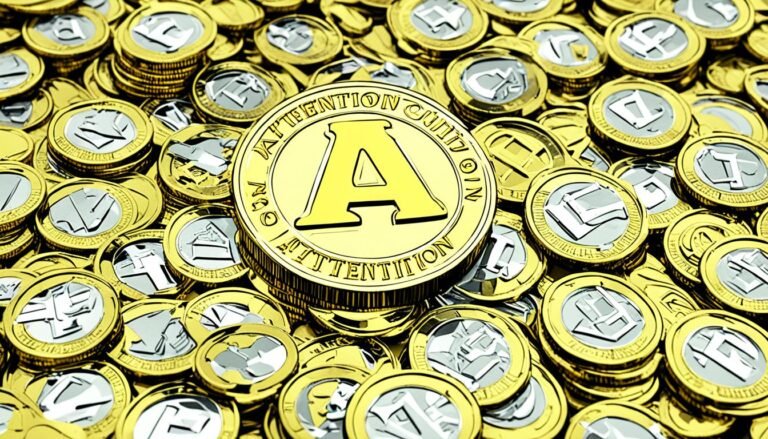Psychological Pricing Strategies
Picture yourself standing in a bustling store, surrounded by shelves filled with products. As you carefully scan the prices, you can't help but wonder why certain items seem more appealing than others.
Welcome to the world of psychological pricing strategies, where the art of pricing goes beyond mere numbers. From charm pricing to prestige pricing, these tactics play with your perception and influence your purchasing decisions.
But what exactly are these strategies, and how do they work? Stick around to uncover the secrets behind these cunning pricing techniques and gain a deeper understanding of the psychology behind your shopping experiences.
Key Takeaways
- Charm pricing, which involves setting prices just below round numbers, can create the perception of a lower price and increase impulse buying by up to 24%.
- Bundle pricing, where products or services are offered in bundles at a discounted price, creates the perception of a better deal and encourages upselling, leading to higher average transaction value and overall revenue.
- Anchoring, the practice of presenting a higher-priced option first, influences customers' perception of value and encourages them to spend more, resulting in potential sales increases of up to 50%.
- Limited-time offers, which create a sense of urgency through discounts or promotions for a limited period, can drive impulse buying, reduce customer hesitation, increase sales, and help clear excess inventory.
Charm Pricing
Charm pricing, also known as psychological pricing, is a compelling strategy that leverages the power of perception to influence consumer purchasing decisions. This pricing strategy relies on the psychological effects it has on consumer behavior, ultimately driving sales and increasing revenue for businesses.
The concept behind charm pricing lies in the belief that consumers are more likely to perceive a product as being cheaper when the price is slightly below a whole number. For example, pricing a product at $9.99 instead of $10.00 creates the perception of a significant price difference, even though the actual difference is only one cent. This small difference can have a significant impact on consumer behavior, as it appeals to our tendency to focus on the leftmost digits of a price.
Research has shown that charm pricing can lead to increased sales and higher levels of customer satisfaction. It taps into our cognitive biases, such as the 'left-digit effect' and the desire to perceive ourselves as savvy shoppers. By using charm pricing, businesses can effectively influence consumer decision-making and encourage them to make a purchase.
Prestige Pricing
When it comes to prestige pricing, luxury brand association plays a crucial role. By positioning your product or service as a high-end offering, you create a perception of exclusivity and quality.
This association with luxury can lead consumers to perceive greater value in your product, making them more willing to pay a higher price.
Luxury Brand Association
Luxury brand association, also known as prestige pricing, strategically utilizes psychological pricing strategies to cultivate an aura of exclusivity and aspiration among consumers.
Brand perception plays a crucial role in consumer behavior, and luxury brands leverage this by employing pricing tactics that create a perception of high value and luxury.
By setting their prices higher than their competitors, luxury brands signal their exclusivity and premium quality. This pricing strategy targets consumers who associate higher prices with superior quality and status.
The allure of owning luxury goods is driven by the desire for social recognition and the feeling of belonging to an exclusive group.
Luxury brand association not only influences consumer behavior but also shapes brand perception, reinforcing the notion that these brands are synonymous with luxury, elegance, and prestige.
Perceived Value Perception
Prestige pricing, through its strategic utilization of psychological pricing strategies, aims to shape consumers' perception of value and create an exclusive and aspirational appeal. Perceived value plays a crucial role in marketing, as it influences consumers' willingness to pay for a product or service.
By employing psychological pricing tactics such as high-end pricing, luxury brands create the perception of superior quality, status, and exclusivity. The pricing strategy signals to consumers that the product is of exceptional value, and therefore justifies a higher price point. This perception of value is further reinforced by marketing efforts that highlight the unique features, craftsmanship, and prestigious associations of the brand.
As a result, consumers are willing to pay a premium for these products, as they perceive them to be worth the investment. The use of psychological pricing strategies in prestige pricing is an effective way to shape consumers' perception of value and create a strong aspirational appeal.
Decoy Pricing
When it comes to decoy pricing, two important points to consider are pricing anchors and choice overload.
Pricing anchors refer to the idea that consumers tend to rely heavily on the first price they encounter when making purchasing decisions. By strategically introducing a decoy price that's positioned higher than the target product, you can influence customers to perceive the target price as more reasonable.
Additionally, offering too many choices can overwhelm consumers and lead to decision paralysis. By strategically using a decoy price to guide their decision-making, you can help customers navigate the options and make a more confident choice.
Pricing Anchors
Pricing anchors, also known as decoy pricing, play a crucial role in influencing consumer decision-making processes. By strategically positioning certain products or services as reference points, businesses can shape consumers' perceptions of value and guide their purchasing choices. This pricing psychology technique takes advantage of consumers' tendency to rely on anchors when making decisions. An anchor is a starting point or reference point that influences subsequent judgments. When presented with multiple options, consumers often compare prices and use the anchor as a benchmark for determining value. To illustrate the power of pricing anchors, consider the following table:
| Product | Price |
|---|---|
| Basic | $10 |
| Premium | $20 |
| Deluxe | $30 |
| Anchor | $25 |
In this example, the "Anchor" product is strategically placed to make the "Premium" product seem like a better deal and the "Deluxe" product seem like a luxury option. By setting the anchor at $25, consumers perceive the $20 price for the "Premium" product as more reasonable and are more likely to choose it over the "Basic" option. Similarly, the $30 price for the "Deluxe" product appears more justifiable compared to the anchor, enhancing its perceived value. This table demonstrates how pricing anchors can shape consumer behavior and influence purchasing decisions.
Choice Overload
To further explore the influence of pricing anchors on consumer decision-making, it's important to consider the concept of choice overload and its connection to decoy pricing strategies.
Choice overload refers to the overwhelming feeling that arises when faced with too many options, leading to decision fatigue and analysis paralysis.
Decoy pricing can exacerbate this phenomenon by introducing a third option that serves as a decoy. Here's how it works:
- Decision fatigue: When consumers are presented with numerous choices, they can become mentally exhausted, making it harder for them to evaluate options effectively.
- Analysis paralysis: Having too many options can make decision-making more challenging, as individuals may struggle to compare and contrast each choice, leading to indecision or avoidance.
Bundle Pricing
Bundle pricing offers customers the opportunity to save money by purchasing a combination of products or services at a discounted price. This pricing strategy is effective for businesses that want to increase sales and attract price-sensitive customers. By bundling products or services together, businesses can create a perceived value that exceeds the actual cost of the individual items.
The table below illustrates the benefits of bundle pricing:
| Benefits of Bundle Pricing | Explanation |
|---|---|
| Cost Savings | Customers are more likely to purchase a bundle if they believe they are getting a better deal than buying the items separately. This can lead to increased sales and revenue for the business. |
| Increased Perceived Value | Bundling allows businesses to create a perception of added value by offering a combination of products or services at a discounted price. This can enhance the customer's overall experience and satisfaction. |
| Competitive Advantage | Bundle pricing can give businesses a competitive edge by offering unique combinations or exclusive discounts. This can attract customers who are looking for cost-effective options and differentiate the business from its competitors. |
Odd-Even Pricing
Implementing odd-even pricing can be a strategic tactic for businesses to influence consumer purchasing behavior and maximize profits. This pricing strategy is based on the psychological principle that consumers perceive odd prices (ending in 1, 3, 5, 7, or 9) as being significantly lower than even prices (ending in 0, 2, 4, 6, or 8). By utilizing odd-even pricing, businesses can tap into the power of pricing psychology to shape consumer perceptions and drive sales.
Here are three reasons why odd-even pricing can be an effective tool in your pricing strategy:
- Perception of lower prices: Consumers tend to associate odd prices with discounts or bargains. By setting a product's price at $9.99 instead of $10, businesses can create the perception of a lower price, enticing consumers to make a purchase.
- Psychological anchoring: Odd-even pricing allows businesses to anchor the consumer's reference point to a lower price. When presented with a higher-priced option, the odd-priced item appears more affordable in comparison.
- Increased purchase likelihood: Research has shown that odd-even pricing can increase the likelihood of a purchase. Consumers often perceive odd prices as more reasonable and are more likely to make a purchase decision based on that perception.
Price Anchoring
Price anchoring is a powerful psychological pricing strategy that businesses can use to influence consumer perceptions and drive sales. By presenting a higher-priced option alongside a lower-priced option, businesses can anchor the consumer's perception of value to the higher price, making the lower price seem like a better deal. This strategy takes advantage of a cognitive bias called anchoring, where people rely heavily on the first piece of information they receive when making decisions.
The table below illustrates how price anchoring can be used effectively:
| Product | Regular Price | Sale Price |
|---|---|---|
| Basic | $50 | $30 |
| Standard | $75 | $50 |
| Premium | $100 | $80 |
| Ultimate | $150 | $120 |
In this example, the regular prices act as anchors, making the sale prices seem like significant discounts. By presenting a range of pricing options, businesses can appeal to different consumer preferences and budgets. Additionally, the higher-priced options create a perception of quality and value, making the lower-priced options even more attractive.
Price anchoring can effectively influence consumer behavior by shaping their perceptions of value. By strategically setting price anchors, businesses can guide consumers towards their desired purchasing decisions and increase sales.
Loss Leader Pricing
When it comes to loss leader pricing, the key is to offer products at low initial prices. This strategy aims to attract customers by creating the perception of a great deal.
Low Initial Prices
To effectively engage customers and drive sales, incorporating low initial prices, also known as loss leader pricing, can be a strategic approach for businesses. By offering products or services at a significantly reduced price, businesses can attract new customers and encourage them to make a purchase.
Here are three reasons why low initial prices have a powerful psychological impact on consumers:
- Perception of value: When customers see a product priced lower than its perceived value, they perceive it as a great deal and are more likely to make a purchase.
- Reciprocity: Customers feel a sense of obligation to reciprocate the perceived value they received from the initial low price, which can lead to repeat purchases and increased customer loyalty.
- Word of mouth marketing: Customers who feel they've obtained a great deal are more likely to share their positive experience with others, generating word of mouth marketing and attracting new customers.
Strategic Product Positioning
With the proven impact of low initial prices on consumer behavior, it's essential for businesses to strategically position their products to maximize the benefits of loss leader pricing.
Strategic product positioning involves carefully selecting the target market and positioning the product in a way that captures their attention and drives them to make a purchase.
Market segmentation plays a crucial role in this process, as it allows businesses to identify specific segments of consumers that are most likely to respond positively to loss leader pricing.
By understanding the needs, preferences, and behaviors of these segments, businesses can tailor their positioning strategies to effectively communicate the value and benefits of their products.
This targeted approach not only increases the likelihood of attracting customers but also enhances the overall effectiveness of the loss leader pricing strategy.
Encouraging Impulse Purchases
Encouraging impulse purchases through loss leader pricing can be a powerful strategy to drive customer engagement and increase sales. By offering promotions and discounts on certain products, you create a sense of urgency and scarcity, compelling customers to make impulsive buying decisions.
Here are three ways loss leader pricing can encourage impulse purchases:
- Limited-time offers: By setting a specific time frame for the discounted price, you create a sense of urgency. Customers feel the need to take advantage of the deal before it expires, increasing the likelihood of impulse purchases.
- Flash sales: These short-term promotions create a sense of scarcity, as customers know the discounted price will only be available for a limited number of items. This scarcity tactic can trigger impulsive buying behavior.
- Bundling: Offering discounted prices on bundles encourages customers to purchase additional items they may not have considered initially. The perceived value of the bundle and the discounted price can lead to impulsive purchases.
Price Skimming
Price skimming is a strategic pricing technique that involves setting an initial high price for a product or service and gradually lowering it over time. This approach allows businesses to maximize profits in the early stages of a product's lifecycle by targeting customers who are willing to pay a premium price. As the market becomes saturated and competition increases, the price is then lowered to attract more price-sensitive customers.
To effectively implement price skimming, it's essential to conduct a thorough competitor analysis. This involves evaluating the pricing strategies of your competitors, understanding their target markets, and identifying any unique selling points that differentiate your product. By analyzing the competition, you can determine the optimal price point for your product and ensure that it aligns with customer expectations.
One of the benefits of price skimming is that it allows businesses to capture the maximum value from early adopters and enthusiasts who are willing to pay a premium price for new and innovative products. This initial revenue can then be reinvested in research and development, marketing efforts, and production costs. Additionally, lowering the price over time can help attract a larger customer base and maintain a competitive advantage in the market.
However, it's important to carefully consider the potential drawbacks of price skimming. Lowering the price too quickly or by large amounts can lead to negative perceptions from customers who purchased the product at a higher price. It's crucial to communicate the value proposition effectively and provide additional benefits or features to justify the initial high price.
Subscription Pricing
After successfully implementing price skimming, businesses can further optimize their pricing strategies by considering subscription pricing as a viable option. Subscription pricing offers several benefits that can help businesses increase revenue and build customer loyalty.
Here are three reasons why you should consider incorporating subscription pricing into your business model:
- Subscription Customization: With subscription pricing, you have the opportunity to offer different levels of service or product bundles to cater to the varying needs and preferences of your customers. This customization allows you to provide a personalized experience, making customers feel valued and more likely to continue their subscription.
- Pricing Tiers: By offering different pricing tiers, you can attract a wider range of customers. Some customers may be willing to pay a higher price for additional features or exclusive perks, while others may prefer a more basic and affordable option. Pricing tiers allow you to capture different segments of the market and maximize your revenue potential.
- Predictable Revenue: Subscription pricing provides a more stable and predictable revenue stream compared to one-time purchases. This can help you better forecast cash flow and allocate resources accordingly. With a steady stream of recurring revenue, you can invest in R&D, marketing, and customer retention strategies to further grow your business.
Dynamic Pricing
Dynamic pricing, also known as surge pricing or demand-based pricing, is an effective strategy that allows businesses to adjust their prices in real-time based on various factors such as supply and demand, customer behavior, and market conditions. This approach enables companies to optimize their pricing strategies and maximize revenue by offering personalized pricing to customers.
Real-time pricing refers to the ability of businesses to change their prices instantly in response to changing market conditions. With the help of advanced technology and data analytics, companies can monitor customer preferences, competitor pricing, and other factors to determine the optimal price at any given moment. This dynamic approach ensures that businesses are always charging the right price to maximize profitability.
To illustrate the potential impact of dynamic pricing, consider the following table:
| Customer Segment | Original Price | Personalized Price |
|---|---|---|
| High-income | $100 | $120 |
| Middle-income | $80 | $90 |
| Low-income | $60 | $70 |
| Students | $40 | $45 |
Conclusion
By incorporating psychological pricing strategies into your business, you can tap into the subconscious of your customers and influence their purchasing decisions.
Through charm pricing, you can create a sense of familiarity and affordability.
Prestige pricing allows you to position your brand as exclusive and high-quality.
Decoy pricing intrigues customers with irresistible options.
Bundle pricing offers value and convenience.
Odd-even pricing plays with customers' perception of prices.
Loss leader pricing attracts customers with tempting deals.
Price skimming helps you maximize profits.
Subscription pricing ensures customer loyalty.
Dynamic pricing responds to market demand.
With these strategies, you can captivate your audience and drive sales.







